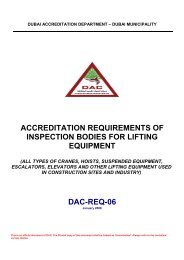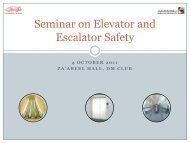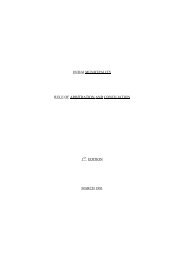Replacement of Chlorinated Solvents (CFCs, CTCs, MCFs)
Replacement of Chlorinated Solvents (CFCs, CTCs, MCFs)
Replacement of Chlorinated Solvents (CFCs, CTCs, MCFs)
Create successful ePaper yourself
Turn your PDF publications into a flip-book with our unique Google optimized e-Paper software.
Introduction:<br />
The Montreal Protocol on substances that deplete the Ozone Layer that is<br />
adopted in 1987, establishes specific limits on production and consumption<br />
levels and deadlines for reduction and elimination <strong>of</strong> these substances for<br />
cleaning and degreasing activites.<br />
The solvents controlled by the Montreal Protocol are: chlor<strong>of</strong>luorocarbons (i.e.<br />
CFC-113, trichlorotrifluoroethane), carbon tetrachloride (CTC), methyl<br />
chlor<strong>of</strong>orm (MCF-only 1,1,1-trichloroethane) and hydrochlor<strong>of</strong>luorocarbons<br />
(i.e. HCFC-225, HCFC-123, HCFC 141b). These chemicals have high ozone<br />
depleting potential(ODP) which have contributed to the depletion <strong>of</strong> ozone<br />
level in the upper atmosphere. The ozone layer protects us from the harmful<br />
effects <strong>of</strong> ultraviolet(UV) radiation from the sun.<br />
The CFC-113, CTC and MCF are used extensively in general parts cleaning<br />
in a wide range <strong>of</strong> manufacturing and maintenance processes throughout the<br />
metal or plastic industry. Solvent use is integral to many production<br />
processes, removing organic compounds such as grease and oils, particulate<br />
matter and inorganic contaminants from metal or plastic surfaces and<br />
preparing parts for subsequent operations such as assembly, coating,<br />
electroplating, inspection and packing.<br />
The CFC - 113 due to its low toxicity, non-flammability and stability make it<br />
attractive for use as solvent. It is widely used in the electronics and other<br />
similar industries to clean delicate surfaces and precision instruments. Carbon<br />
tetrachloride and methyl chlor<strong>of</strong>orm is widely used in general metal part<br />
cleaning.<br />
This guideline sets out the general requirements in the replacements <strong>of</strong> ozone<br />
depleting <strong>CFCs</strong> and solvents in degreasing and cleaning industries.<br />
Guidelines:<br />
1. All substances that are classified as high ozone depleting substances such<br />
as CFC-113, 111-Trichloroethane(also known as methyl chlor<strong>of</strong>orm), and<br />
carbon tetrachloride that are used in cleaning and degreasing shall not be<br />
used from the dates stated below.<br />
Date<br />
Table 1: <strong>Chlorinated</strong> Solvent Phaseout<br />
Controlled Substances<br />
<strong>CFCs</strong> and Carbon Tetrachloride (CTC) phased<br />
January 01,2010 out<br />
January 01,2015<br />
Methyl Chlor<strong>of</strong>orm (MCF) phased out<br />
HCFC reduction by 10%<br />
January 01,2020 HCFC reduction by 35%<br />
January 01,2030 H<strong>CFCs</strong> phase out<br />
2. Any industry using the controlled substances should prepare an inventory<br />
and phase-out program in order to comply with the latest phase out








